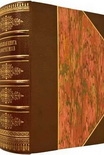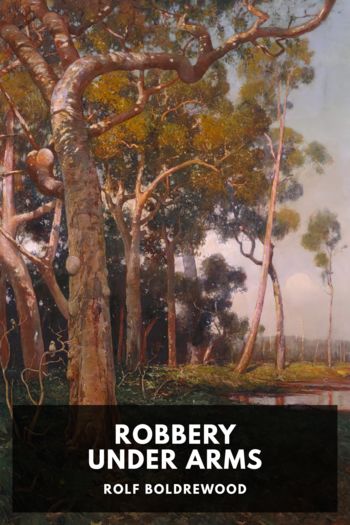A Chance to Die Elisabeth Elliot (electronic reader .txt) 📖

- Author: Elisabeth Elliot
Book online «A Chance to Die Elisabeth Elliot (electronic reader .txt) 📖». Author Elisabeth Elliot
What if our feet be torn?
Where He has marked the pathway
All hail the briar and thorn!
Scarce seen, scarce heard, unreckoned,
Despised, defamed, unknown,
Or heard but by our singing,
On, children, ever on!
1. Toward Jerusalem, p. 8.
Chapter 29
Grey Jungle, Crystal Pool
Ponnammal, whose cancer had been discovered in April 1913, became very ill again in the following year. Several times she heard music when no earthly music was being played. Amy took it as one of “the many things of life which we may only know in part until for us too the curtain of sense wears thin.”
The epistle of James says that the sick should call for the elders of the church to anoint them. Should they do that now? They were not sure. Amy was used to being given some sign to confirm a Scripture verse. So they prayed that if they should, someone who was earnest about following this primitive church custom should come along. He came, an old friend from Madras. It was a solemn meeting around the sickbed, the women dressed as usual in their hand-loomed saris, but white ones for this occasion. They laid a palm branch across Ponnammal’s bed as a sign of victory and accepted whatever answer God might give, certain that whether it was to be physical healing or not, He would give victory and peace. It sounds like a simple formula. It was an act of faith, but certainly accompanied by the anguish of doubt and desire which had to be brought again and again under the authority of the Master.
The answer that came was that Ponnammal, from the very day of the anointing, grew rapidly worse. She lay for days without speaking, her dull eyes half-open, seeming to see nothing. The pain was violent, kept under only by large doses of morphia. “She has been walking through the valley of the shadow of death. I never knew how dense that shadow could become, for I never before watched anyone dying in this slow, terrible way. . . . Nothing was visible but the distress and depression of this most fearful disease.”
Once when she seemed to be in unimaginable misery she told Amy how she had longed to be allowed to stay. She thought she could help a little “if the pain did not pass this limit.” “It seemed to me the most unselfish word I had ever heard from human lips.” Ponnammal touched the limit at last—the limit divinely set to pain—and her “warfare was accomplished” on August 26, 1915. She would never be replaced. She had been among the best. But “we shall have our best again, purified, perfected, assured from change forever.” That was the ground of hope.
There was relief in September from the long strain when Amy took a group of children up into the forest near Dohnavur for a few weeks in a government bungalow. It was no longer possible to move such a family to the distant hill resorts, and Amy, always zealously protective of her children, feared European influences there that would contribute nothing to their spiritual welfare. There were worldly distractions which might sow discontent among her children. She saw the need for rest and change, however, and asked God for some provision.
It was an experiment, and the house was primitive. The floor was cement, there were no facilities, it was dank and cold when it rained. Everything but water had to be transported from the plain by coolies. But the weeks were glorious, full of flower collecting, swimming and diving in the pool of a rushing mountain river, hunting for animal tracks (wild elephant tracks by the hundred), bears’ holes, tiger spoor. Amy and three cohorts gave the others “a shivering half hour” by hiding behind a tree and growling. “There was a wild rush up to the house, and then to our immense gratification we saw the whole household turn out with sticks, led by Sella-mutthu, horribly alarmed but valiant.”
What the holiday did for the children was salutary. What it did for Amy was something else. In October she was very ill, so ill that, according to a private note in a journal, she “gave way.” To her friends at home she said nary a word about her health, but admitted that “various things happened which interrupted the even flow of life.” (A biographer would be hard put to single out two days in a row when the flow of life in Dohnavur could be described as “even.”) By giving way she probably meant that she let someone else know she was in pain. Perhaps she had to go to bed. “Distress of thought of doctor being called to leave far needier people for me. Distress of finding some dear ones overburdened because I had given way.” She prayed, perhaps not for the first time and certainly not for the last, “Do not let me be ill and a burden or anxiety to anyone. O let me finish my course with joy and not with grief. . . . Let me die of a battle-wound, O my Lord, not of a lingering illness. Forgive this prayer if it be wrong.”
In the same month it was discovered that Arulai, who had been pronounced cured of tuberculosis, now had Bright’s disease, “another of those grave trials which give us a chance to prove the things we believe.” Arulai, Amy’s “Star,” treasure of all treasures, the Elisha on whom Amy had begun to believe the mantle was to fall. On one of the worst days Amy was walking in the circle of nursery cottages called the Round, praying and thinking of Walker, Ponnammal, Arulai—“our three strongest spiritual influences, the three upon whom I could always count for strength of character as well as for spiritual power: Lord, must Thou take them all?” In early November the answer seemed to be yes. Arulai’s pulse faded, she refused her medicine, and could not speak. Amy sent a message to a friend: Come. Arulai dying. She rallied and survived





Comments (0)